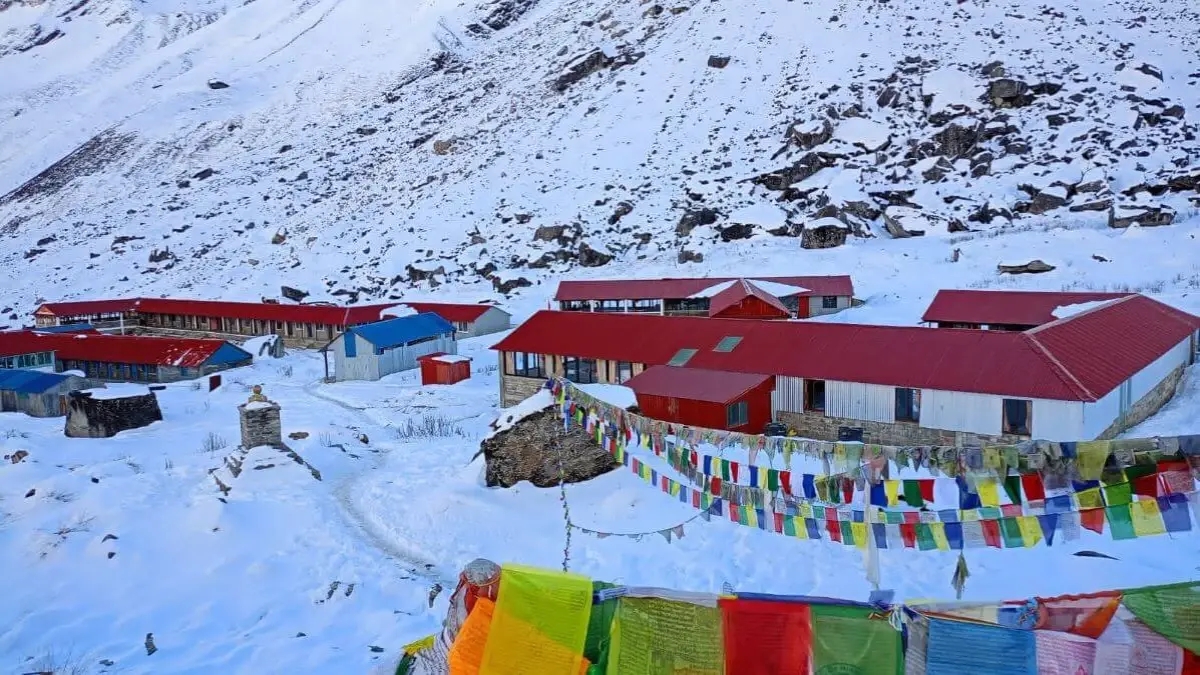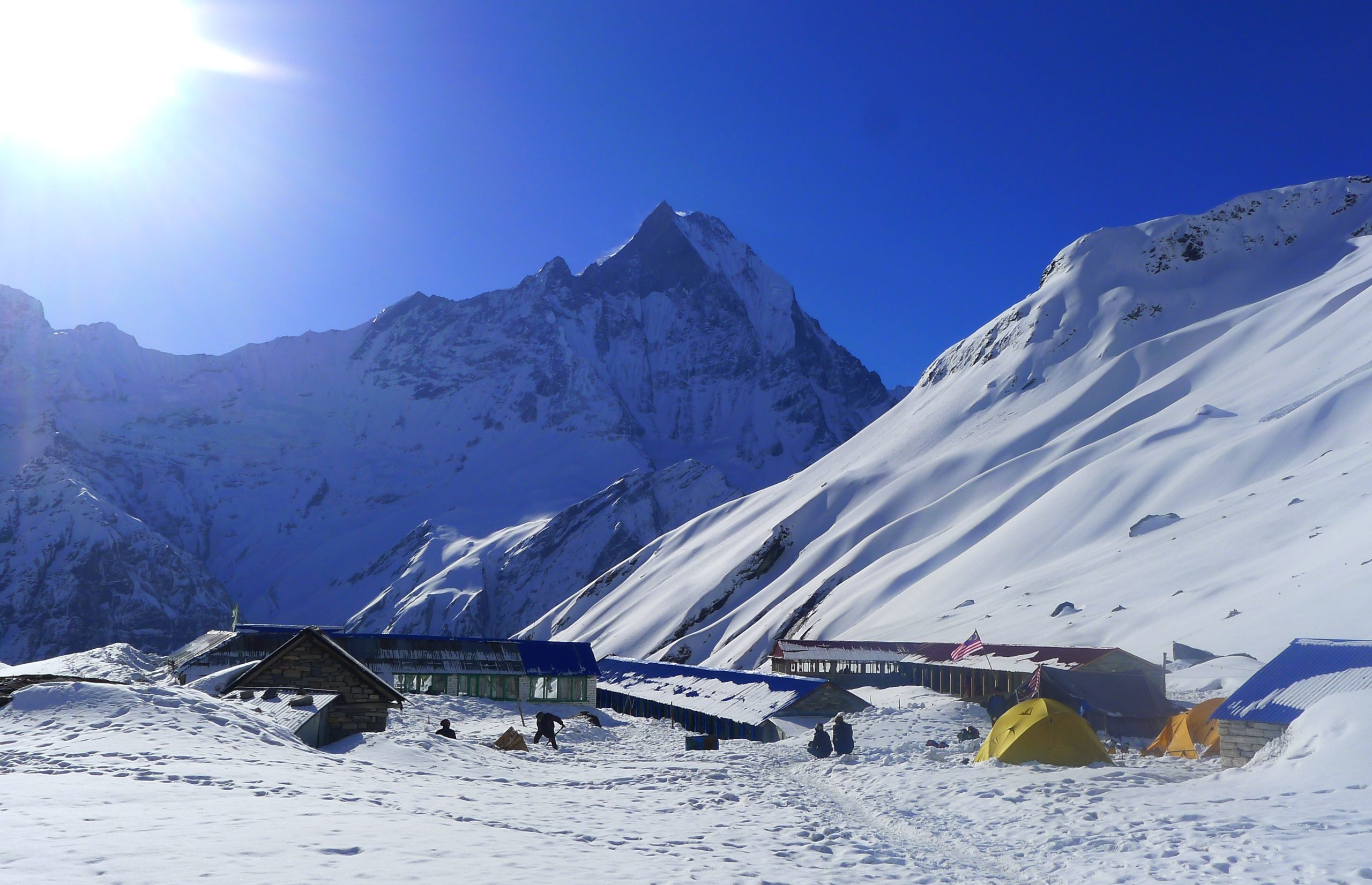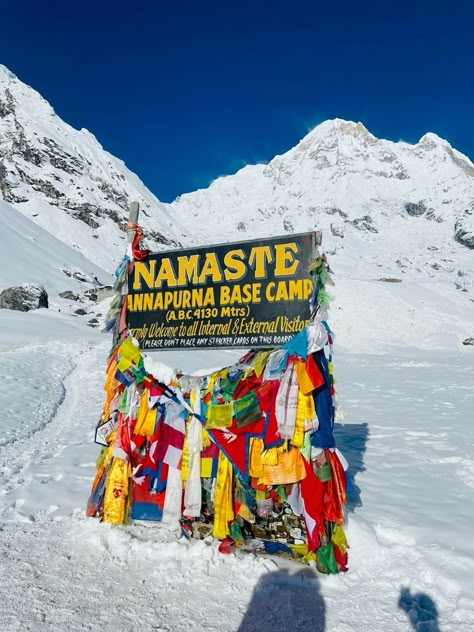Everest Base Camp vs. Annapurna Base Camp
Perched at the foot of the world's highest peaks, this is the ultimate trekkers' dream, but one big question crops up: which route to take-to Everest...

So, you’ve been dreaming about trekking to Annapurna Base Camp (ABC)? Imagine this—you’re walking through lush rhododendron forests, crossing swaying suspension bridges over glacial rivers, and finally standing beneath the towering, snow-covered peaks of Annapurna. It sounds like a dream come true, but before you lace up your trekking boots, there’s one big question: How much does this adventure cost?
Budgeting for a trek like this can be overwhelming. With numerous factors like permits, transportation, accommodation, food, and the potential need for guides or porters, planning every detail is essential. Whether you’re a budget backpacker, a comfort-seeker, or a traveler looking for a luxurious experience, this guide breaks down all the costs so you can plan the perfect ABC trek without any surprises. Read on to learn about every aspect of your upcoming adventure.

The overall cost of the Annapurna Base Camp trek varies significantly based on your travel style and the level of comfort you desire during your journey. The trek might cost between $500 and $700 per person for budget travelers. Those seeking a mid-range experience can expect to pay around $800 to $1,200 per person, while a luxurious trekking experience might range from $1,500 to $3,000 per person. Several key factors, including permits, transportation, accommodation, food, guides and porters, and gear or equipment influence these cost variations.
Choosing the right trekking style affects your wallet and overall experience. While some travelers may prefer the raw, authentic feel of budget trekking, others might opt for the additional comforts and conveniences of mid-range or luxury options. Each approach has its own merits, and with careful planning, you can tailor your trek to meet your personal preferences and budget.
Before setting foot on the trail, you must obtain two essential permits. The Annapurna Conservation Area Permit (ACAP) is required for entering the protected region and costs about $30 per person. Additionally, you’ll need the Trekkers’ Information Management System (TIMS) Card, which is priced at roughly $20 per person.
Both permits can be obtained at the Nepal Tourism Board offices in Kathmandu or Pokhara. To ensure a smooth process, it’s advisable to bring a copy of your passport along with passport-sized photos.
These permits not only provide you with legal entry into the region but also contribute to local conservation efforts. The fees collected are reinvested into maintaining trails, preserving natural habitats, and supporting the communities along the trekking routes. While these fees may seem like minor additions to your budget, they are crucial for ensuring that the natural beauty of the Annapurna region is protected for future generations.
Most trekkers begin their journey from Pokhara, a picturesque lakeside city that serves as the gateway to the Annapurna region. Traveling from Kathmandu to Pokhara offers several options. A quick 30-minute flight will set you back $100 to $150, providing scenic aerial views of the Himalayas that are simply unforgettable.
Alternatively, a tourist bus is a much more economical choice at $10 to $25, though the journey can take 6 to 8 hours and be less comfortable. If comfort is a priority, hiring a private car for about $120 to $150 might be the best option.
Once in Pokhara, you’ll need to reach the starting points of your trek—typically Nayapul or Ghandruk. Options here include local buses, jeeps, or private taxis, with prices ranging from $3 to $5 for a local bus, $15 to $25 for a jeep, and $30 to $50 for a private taxi. These flexible choices ensure that you can select a mode of transportation that fits both your schedule and your budget, setting a positive tone for the journey ahead.
Accommodation along the ABC trek is primarily provided by teahouses, which offer a range of options from basic to comfortable. In lower-altitude villages like Ghandruk, Chhomrong, or Bamboo, you can expect to pay $5 to $10 per night for a simple yet welcoming room.
As you ascend to higher altitudes—such as Deurali or near Annapurna Base Camp itself—prices typically increase to around $10 to $15 per night. For those desiring a bit more comfort, luxury lodges are available at approximately $30 to $50 per night.
Teahouses provide not only a place to rest but also a cultural experience, as they often serve local cuisine and offer insights into Nepali hospitality. It’s important to note that during peak seasons like Spring and Autumn, teahouses fill up quickly, so booking in advance is highly recommended. Early planning ensures you secure a cozy place to stay, allowing you to focus on the trek ahead.

Food is not only a key source of energy for trekking but also a significant part of your daily expenses. The staple meal along the trail is Dal Bhat—a nutritious dish of lentil soup and rice, often available with unlimited refills for $4 to $8.
In addition, you can find a variety of other dishes, such as noodles, fried rice, and momos for $3 to $7, while a hearty breakfast may cost $3 to $6. Beverages like tea or coffee are typically priced between $1 and $3 per cup, and even hot water, which is sometimes needed for preparing meals, costs about $1 to $3 per liter.
The culinary experience on the trek is as diverse as it is delicious. Many trekkers enjoy the communal atmosphere at teahouses, where meals are shared and stories are exchanged. Given that prices can rise with altitude, it’s wise to carry some energy bars and a water purification system to help manage costs. This way, you ensure that you stay well-nourished without overspending, making your trekking experience both delightful and economical.
Hiring a guide or porter can greatly enhance your trekking experience by providing local knowledge and alleviating the burden of carrying heavy loads. A guide generally costs between $25 and $40 per day and can help you navigate the trails and interpret local culture and landmarks. A porter, on the other hand, is available for $15 to $25 per day to carry your gear, allowing you to trek more comfortably. Additionally, it’s customary to tip your guide $5 to $10 per day and your porter $3 to $5 per day.
These services can be arranged in Pokhara or through local trekking agencies, offering you a hassle-free trekking experience even if you’re new to the mountains. Experienced guides not only ensure that you follow the correct trail but also enrich your journey with fascinating insights about the region’s history and natural wonders. Meanwhile, porters help ease the physical strain, allowing you to fully appreciate the breathtaking scenery without the burden of heavy backpacks.
Another important factor to consider is whether to rent or buy your trekking gear. For those who do not wish to invest in new equipment, renting is a cost-effective alternative. In Kathmandu or Pokhara, you can rent essential items—such as trekking boots, sleeping bags, and jackets—for about $1 to $5 per item per day.
However, if you plan on trekking frequently, purchasing your gear might be more economical in the long run, with a complete trekking set costing between $100 and $300.
When deciding whether to rent or buy, consider the frequency of your trekking adventures. High-quality gear is an investment in your safety and comfort. Prioritize essentials like durable trekking boots, a warm jacket, and a reliable sleeping bag. With the right equipment, you not only protect yourself from the harsh weather but also enhance your overall trekking experience.
Several additional costs may catch trekkers by surprise if they are not well-prepared. Many teahouses charge extra for basic services such as charging your electronic devices, with fees ranging from $2 to $5 per charge. Accessing Wi-Fi, if available, usually comes for $2 to $5 per session, and taking a hot shower might set you back another $3 to $5.
Travel insurance is another vital expense, typically costing between $50 and $150, to safeguard against unforeseen circumstances. Perhaps the most critical hidden cost is that of emergency evacuation, which can range from $2,000 to $5,000. Ensuring that your travel insurance covers such emergencies is essential to avoid exorbitant out-of-pocket expenses.
Being aware of these potential hidden costs helps you plan a realistic budget. By factoring in these extra expenses, you can avoid surprises during your trek and enjoy a smoother, more relaxed journey. Preparation is key, and having a contingency plan for unexpected costs ensures that your adventure remains stress-free.
Keeping costs under control while still enjoying the trek is entirely possible with a few smart strategies. Carrying a reusable water bottle and water purification tablets can save you from the recurring expense of bottled water. Sticking to the local favorite, Dal Bhat, not only provides a nutritious meal but also offers excellent value for money. Traveling in a group is another effective way to reduce costs, as expenses for guides and porters can be shared among several people. Finally, opting to rent gear instead of purchasing expensive new equipment can significantly cut down your overall expenses.
Consider planning your daily budget. Monitoring your spending and knowing where you can cut back allows you to allocate your funds more efficiently. These small savings add up for the trek, ensuring that you have extra money available for memorable experiences or emergencies.
Preparation is key to ensuring that your trek to Annapurna Base Camp is both safe and enjoyable. Start your planning several months in advance by researching the best time to visit, obtaining necessary permits, and arranging your travel itinerary. Acclimatization is another critical aspect—give yourself time to adjust to the altitude by planning rest days along your route. A well-prepared trekker is not only physically ready for the challenges ahead but also mentally prepared to embrace the surprises that come with high-altitude adventures.
Engage in a regular exercise regimen to build your stamina and strength before the trek. Cardiovascular workouts, strength training, and even practice hikes can help condition your body for the rigorous demands of mountain trekking. Investing time in proper preparation will ensure that you are fit, confident, and ready to enjoy every moment of your adventure.
Packing for the Annapurna Base Camp trek requires careful consideration. You’ll need to balance bringing essentials with keeping your load as light as possible. A good pair of trekking boots, moisture-wicking clothing, a warm jacket, and a high-quality sleeping bag are non-negotiable items. Additionally, pack a first aid kit, sunscreen, insect repellent, and a headlamp or flashlight.
Don’t forget practical items like a reusable water bottle, energy bars, and a compact water purification system. Personal items such as a camera, travel journal, and a few changes of clothes will help you document your journey and stay comfortable throughout your trek. Creating a detailed packing list well in advance can save you time and stress as you prepare for your adventure.
The Annapurna region is not just a haven for trekkers; it’s also a place rich in culture and natural heritage. As you traverse the trails, take time to engage with local communities, learn about traditional Nepali customs, and understand the region’s history. The Gurung and Magar communities inhabit many villages along the trekking route, whose warm hospitality and unique traditions provide an enriching cultural experience.
Moreover, the environmental significance of the Annapurna Conservation Area cannot be overstated. Trekking here means you are entering a region that has been carefully preserved to protect its diverse flora and fauna. Respect local customs and adhere to sustainable trekking practices to minimize your environmental impact. By doing so, you contribute to the conservation of this majestic landscape for future generations.
Safety is paramount when trekking in the Himalayas. Always heed the advice of local guides, check weather forecasts regularly, and ensure that you have the proper permits and travel insurance. Awareness of altitude sickness symptoms and how to respond can be crucial for your well-being. Additionally, follow the “Leave No Trace” principles to preserve the natural beauty of the region. Dispose of waste properly, avoid disturbing wildlife, and stick to marked trails.
Your safety and the preservation of the environment go hand in hand. Responsible trekking not only protects you but also ensures that the pristine beauty of Annapurna remains intact. By taking these precautions, you guarantee a safer journey and help maintain the region’s delicate ecological balance.
Our team of experienced trekkers at Nature Trail has compiled a list of expert tips to help you make the most of your Annapurna Base Camp adventure:

At Nature Trail, we believe that trekking should be as fun and hassle-free as it is exhilarating. Our travel agency takes care of every detail—from expert guidance on the trail to ensuring you have the best local experiences—all while keeping your budget in mind. We’re excited to announce that the cost of our Annapurna Base Camp trek has been reduced from $1,250 to just $980 per person. This special offer makes it easier than ever to embark on a top-notch, well-organized adventure without overspending.
When you book with Nature Trail, you’re not just signing up for a trek; you’re joining a community of like-minded adventurers. Our experienced guides are passionate about sharing the beauty of the Himalayas, and our comprehensive packages include everything you need for a memorable journey.
From comfortable accommodations to nutritious meals and safety support, we ensure that every aspect of your trek is covered. So, why wait? Take advantage of this limited-time offer and book your trip with us now to experience the magic of Annapurna like never before.
Check out the Nature Trail ABC Trek Package Here: ABC Trek Package

Q: What is the best time to visit Annapurna Base Camp?
A: The ideal seasons for trekking are Spring (March to May) and Autumn (September to November) when the weather is clear and the rhododendron forests are in bloom. Autumn is particularly popular for its stable conditions and breathtaking views.
Q: How do I obtain the necessary trekking permits?
A: Permits such as the Annapurna Conservation Area Permit (ACAP) and the TIMS card can be obtained from Nepal Tourism Board offices in Kathmandu or Pokhara. Ensure you have a copy of your passport and passport-sized photos ready.
Q: Should I hire a guide or trek independently?
A: While independent trekking is possible, hiring a guide or porter is recommended, especially for first-timers. Guides offer local insights and help navigate the challenging trails, while porters ease the physical strain.
Q: What essential gear should I pack?
A: Essential items include sturdy trekking boots, layered clothing, a warm jacket, a quality sleeping bag, a reusable water bottle, and a water purification system. A first aid kit, sunscreen, and a headlamp are also important.


Perched at the foot of the world's highest peaks, this is the ultimate trekkers' dream, but one big question crops up: which route to take-to Everest...

Introduction Yoga is an important tool for physical training and the mental conditioning necessary to confront adversity. The fusion of yoga with...

The Annapurna Base Camp (ABC) trek is one of the most spectacular trekking routes in the world - and rightly so. It takes you through the heart of the...
Discover incredible offers for your upcoming adventure by subscribing to our newsletter with the latest travel tips and updates.
